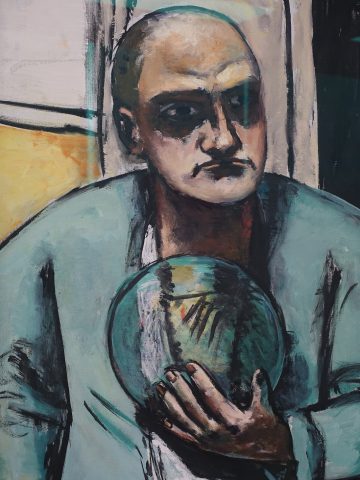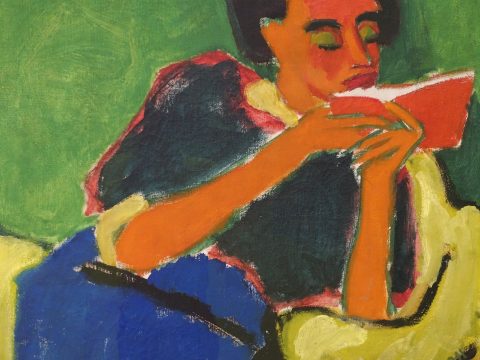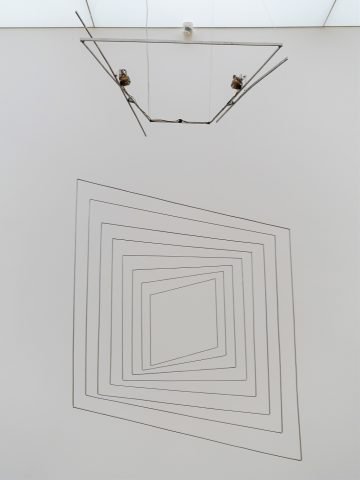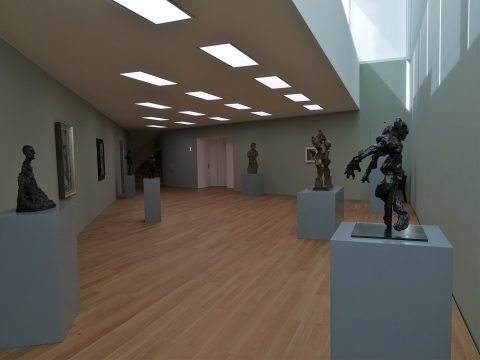Hiltiland, where dreams come true
President of Hilti Art Foundation Michael Hilti sits down with CFA to discuss about the strategy behind his family’s extraordinary art collection.
Son of Professor Martin Hilti, founder of the leading corporation that still bears his family name, Michael Hilti welcomed us a few weeks ago in Vaduz, at the Kunstmuseum Liechtenstein, where since May 2015 a dedicated four storey building is hosting a selection of main works from his and his family’s dream art collection, which goes from masterpieces by pillars of the Modern era such as Gauguin, Beckmann, Picasso, and De Kooning to contemporary masters such as Gianni Colombo or his friend Gotthard Graubner. Client of the iconic Swiss art dealer Ernst Beyeler, and recently re-elected member of Hilti’s Directors Board, Mr. Hilti turned 70 this year and is the kind of person that immediately makes you feel comfortable. Open-minded art collectors are generally so, especially when asked to share their own knowledge of the beauty of art.
- Michael Hilti (President of Hilti Art Foundation) in front of «Selbstbildnis mit Glaskugel», 1936, Max Beckmann, Hilti Art Foundation, photo: Claus Alwin Vogel.
- Max Beckmann, Self-portrait with glass ball, 1936.
- Willem de Kooning, Cross-Legged Figure, 1972.
- Paul Gauguin, Entre les lys, 1889. Detail.
- Karl Schmidt-Rottluff, Die Lesende, 1911. Detail.
- Gianni Colombo, Spazio elastico, 1968.
- The Hilti Art Foundation at Kunstumeum Vaduz, ground floor.
The first one of the three sections that organize the display of your collection at the Kunstmuseum Vaduz is titled “The mystery of Humankind”. Two intense pieces are here exhibited. A self portrait by Max Beckmann and a portrait by Raymond Duchamp-Villon of Charles Baudelaire. Is there any relationship between them?
Michael Hilti: Actually we gave complete freedom to our curator to organize and plan the exhibition. Nevertheless I would notice that these two personalities had in common a pessimistic outlook on the future. Baudelaire was afraid of what was going to happen with the modern developments and feared the loss of spiritual dignity and creativity, while Beckmann, who was a professor living in Berlin at the time he painted this self-portrait, was realizing the disaster which was coming on with the Nazi regime. We bought the Beckmann in 2014, while the Duchamp-Villon was acquired many years ago and this was for sure not the reason for our purchase. Michael Hilti
Do you share their pessimism?
Michael Hilti: No, I don’t. It is just what I think that these two pieces have in common. I am an optimist. In our world today we have to be so.
Could you please describe yourself as an art collector?
Michael Hilti: I started when I was a student buying prints and posters. I was following my own taste. I bought my first painting in London, from a friend of mine who had a small art gallery – and still has it. It was a landscape painted by a British painter with Dutch origin, Albert Hougthuesen (1903-1979). At that time my friend thought the painter would become very famous, but it did not really happen. Anyway, I still have that piece. I consider it a kind of first step. Since then I have been buying what I and also my wife like, for we want to live with the art that we buy. I don’t have any speculative or investment purposes. I keep the pieces and I live with them. And it’s a good thing that my wife shares a similar taste for art as me. For us it’s essentially an emotion. Some collectors collect with their brain, other with their stomach. I would say the combination is the best and in our case the stomach plays a bigger role than the brain. Michael Hilti
Do you go to art fairs?
Michael Hilti: My business doesn’t leave me much time for that. We have bought a lot of works by chance, or from dealers proposing pieces to us. We are also good friends with many artists. And, of course, our curator does a lot of research for us, especially when we decide to focus on a specific artist or period of the history of art. Michael Hilti
Do you buy only for yourself?
Michael Hilti: Under the umbrella of the Hilti Art Foundation there are in fact three separate collections. One is that of my family’s trust, and it is focused on modern classics. For the collection of the family trust we have clear rules about the criteria for acquisitions, and what the trust is interested in. There is also an art council who proposes if a purchase should be made or not. Then there is the collection of my sister, which is also committed to classic modern art. The third collection is that of me and my wife, and it’s where we are completely free to choose. It goes from modern classics to contemporary art. Michael Hilti
Is it different to buy for yourself and do it for your family trust?
Michael Hilti: I wouldn’t say so. Of course for the family collection there are clear restrictions but at the end of the day we have the same target: quality. And in both cases we only buy works we like to live with. I don’t like paintings that don’t make me happy nor inspire me. Michael Hilti
Could you do an analysis of the first year of life of the Hilti Art Foundation’s new exhibition space in Vaduz?
Michael Hilti: I would say that the collection has been extremely well accepted. We got very positive feedbacks. We are not interested in mere numbers of visitors, but I am proud to say that I’ve received letters from people saying thanks for making public our collection. And so far we didn’t have any negative comment, or complain. For us that is the best reward. Both institutions the Kunstmuseum as well as the Hilti Art Foundation collude with their exhibitions like Yin and Yang, which adds to their attractiveness.
How would you like it to evolve in the next years?
Michael Hilti: We adopted a long term approach. The Hilti Art Foundation should become a well known institution, where you find great art. We will close this exhibition in October, and then we will have some repair and restoring work in the new building’s architecture. The next exhibition of pieces from our collections will open on December 15th , with some pieces of work, which we show already now and some new ones. In the long term it could be also an exhibition of single artists. But in this case we have to decide which rooms we want to use, ours or the the ones of the Kunstmuseum, with which we enjoyed already a long lasting cooperation.
According to recent studies, 125 new private art museums have opened all over the world from 2006 to 2013. During the 1990’s the new openings were only 25. What is your view about this trend?
Michael Hilti: As far as I know a lot of these new museums have been created in Asia and Middle East, but actually in these areas there was a cultural gap to be filled. In general, I think that it is a positive trend, bringing more art to the public all over the world. Moreover, it has to be said that private collectors are more free than public museums to develop personal criteria for art collecting and I consider it a very interesting challenge that may have very positive effects in the future. For example, we’ve never had the intention of building a museum. But then a friend of mine, the owner of the jeweller shop, which is integrated in this new building, came up with the idea of creating an art room on the top floor of his shop. This idea changed our mind and let to the creation of this additional building and a much stronger collaboration between us and the Kunstmuseum Liechtenstein.
How is this process affecting the role of the private art collectors?
Michael Hilti: Well, the reaction is probably very different, from the desire to open up also a private museum to a total rejection of doing so and to keep absolute discretion about their collection. It may stimulate private collectors to loan art for exhibitions. Of course when you have a museum, artists are more interested in selling art to you as artists naturally are interested to see their art to be exposed to the public. Michael Hilti
Many art professionals and collectors all over the world are complaining that the art market has become too opaque and needs to be better regulated. Do you have a position on that?
Michael Hilti: Personally I think that the art market is well regulated. Let’s think, for instance, about the Swiss Federal Act on the International Transfer of Cultural Property, or at The Art Loss Register. The restitution process is stricter than ever. More in general, I don’t think that you can’t solve the problem of integrity adding more and more control. Of course there is a lot money in the art system, and of course there are some crooks too. But it’s the same for every business. If you buy a property from the wrong and unreliable seller you also may end up with the wrong piece.
Christie’s officially declared a 29% decrease by value in 2016, while Sotheby’s is losing 20%. Is the recent weakness of the art market just depending on the world’s troubled economy or is it affected by other endogenous problems?
Michael Hilti: It seems that Russian and Chinese collectors are not buying as they used to, but money is still around, and interests are low or even negative, so people are looking for material assets. Moreover, it also depends on what high class collections and art icons go on the market. There are times when there is no good or very limited art for sale, and that seems to be the case today. Michael Hilti
Do you buy at auctions?
Michael Hilti: Sometimes I do. But, regarding my private collection, I would say that only 10% of the pieces come from auction houses. Most comes from galleries and directly through personal connections to artists.
Have you ever sold any work of art at auction?
Michael Hilti: No, not yet, even if our family trust actually allows us to sell a piece if a better piece of the same artist comes to the market.
For the introduction to the catalogue of the current exhibition of your collection in Vaduz you wrote: “Collections acquire coherence and cogency by focusing on specific areas and epochs and, further, by exercising discipline in building and enlarging their holdings”. Is that “focusing” a formula to get real pleasure from art collecting? And, if so, could you try to describe this pleasure?
Michael Hilti: Of course despite the fact of focusing and maybe limiting yourself in the scope of collecting you can still get a lot of pleasure. If you look for quality and if you buy only works you like there is a lot of pleasure. Hence, I would answer to this question with a short true story. Years ago I was visiting the atelier of an artist, and I noticed a small painting hanging on the wall. I immediately asked him why that painting was sold and he replied that it was not sold. I insisted that it was sold and he insisted saying that it was not sold. Of course it is sold, I told him: it got sold the moment I’ve come in your studio. He laughed. Three months later he gave it to me as a present.
April 9, 2021







